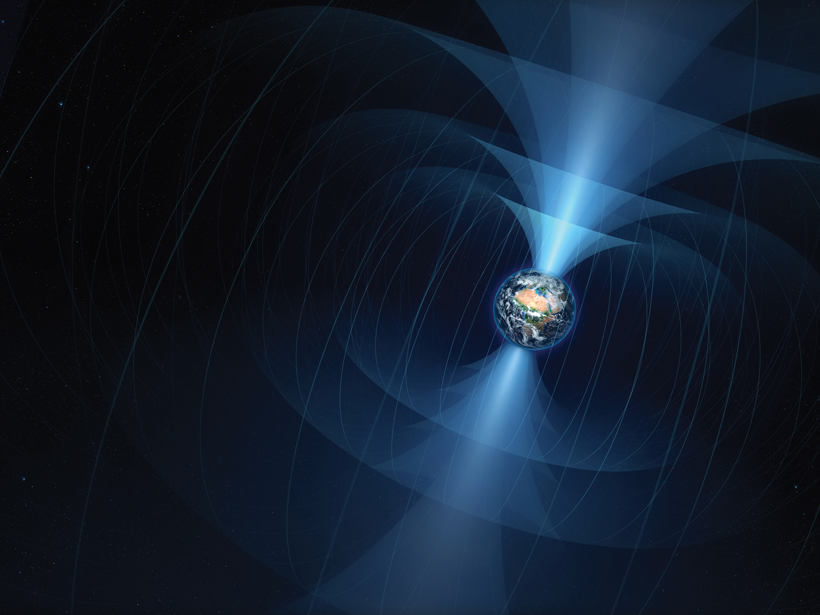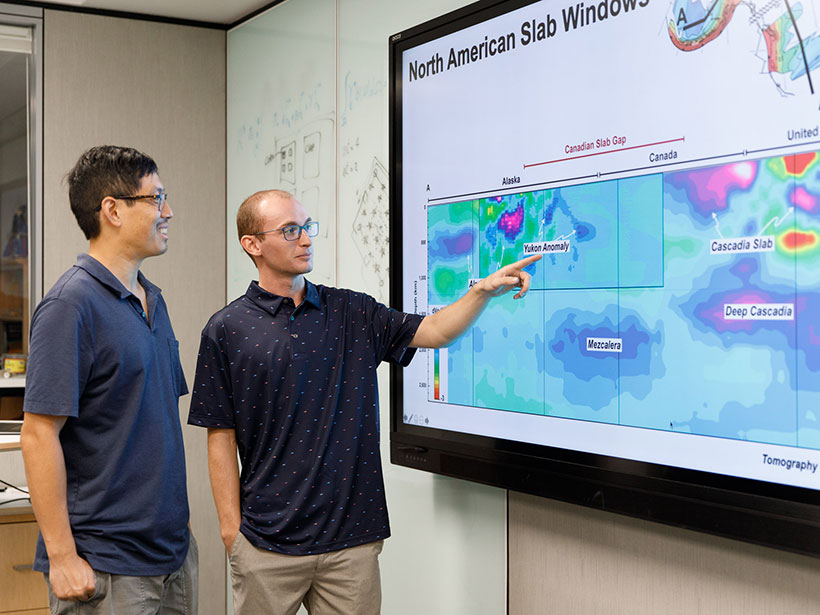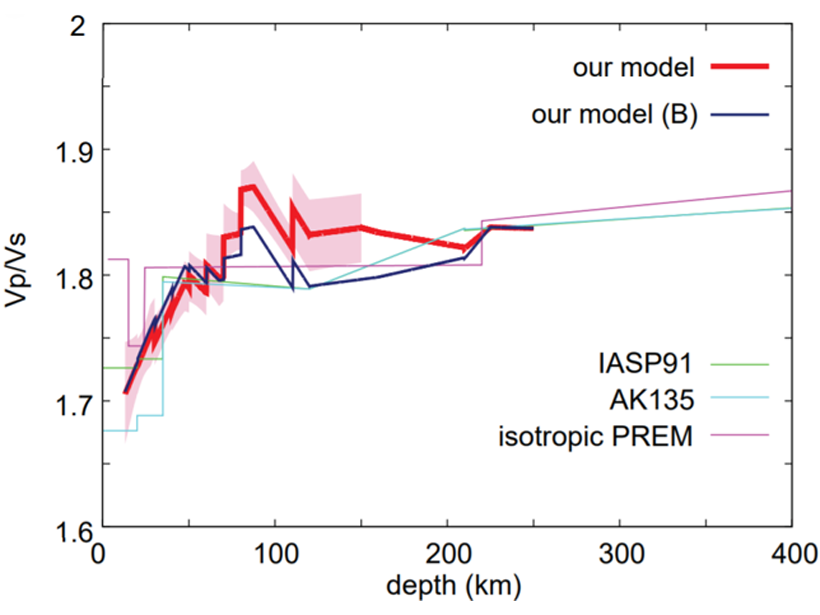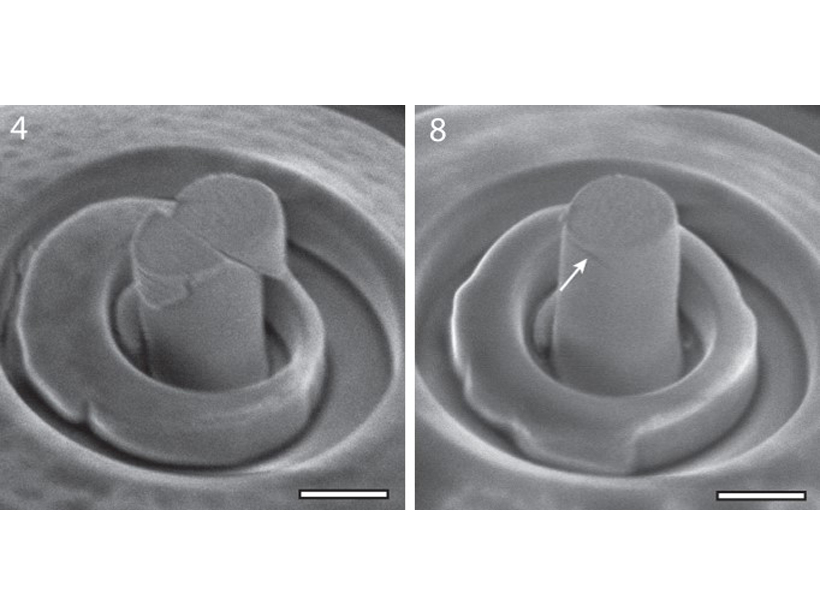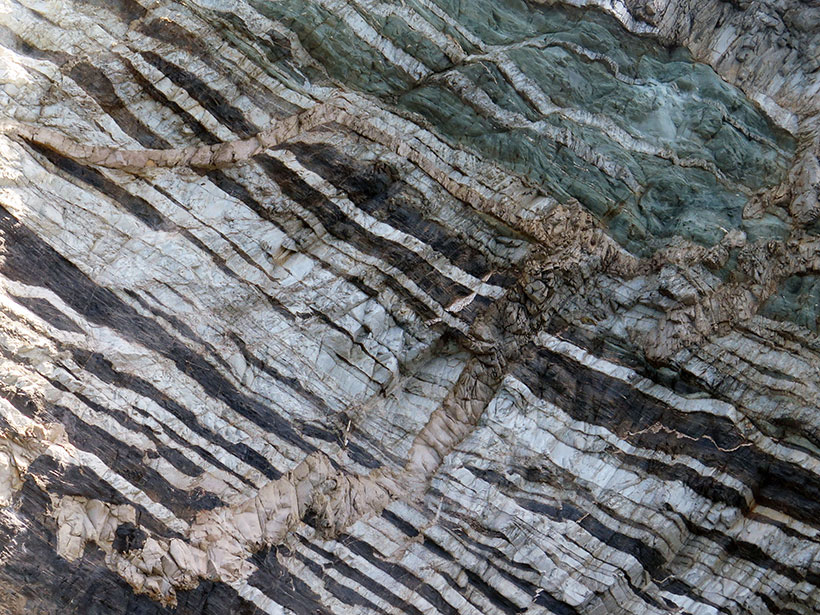Dented, erratic, and wandering, our field is constantly changing its mind.
Earth’s interior
Geologists to Shed Light on the Mantle with 3D Model
The model, which will incorporate 227 million surface wave measurements, could help with everything from earthquake characterization to neutrino geosciences.
The Resurrection Plate Is Dead, Long Live the Resurrection Plate
Using a technique similar to taking a CT scan of Earth, researchers found the possible remnants of a long-debated “missing” tectonic plate.
Pearson and Reid Receive 2019 Norman L. Bowen Awards
Graham Pearson and Mary R. Reid received the 2019 Norman L. Bowen Award at AGU’s Fall Meeting 2019, held 9–13 December in San Francisco, Calif. The award recognizes “outstanding contributions to the fields of volcanology, geochemistry, and petrology.”
Creasy and Wu Receive 2019 Study of the Earth’s Deep Interior Section Award for Graduate Research
Neala Marie Creasy and Wenbo Wu received the 2019 Study of the Earth’s Deep Interior Section Award for Graduate Research at AGU’s Fall Meeting 2019, held 9–13 December in San Francisco, Calif. The award is given annually for advances that contribute to “the understanding of the deep interior of the Earth or other planetary bodies using a broad range of observational, experimental, or theoretical approaches.”
Unexpected Oceanic Lithosphere-Asthenosphere P-wave Velocities
A peak in seismic P-wave – S-wave velocity ratios at the lithosphere-asthenosphere boundary beneath old Pacific lithosphere requires an additional property besides temperature as an explanation.
Olivine Micropillars Reveal Shallow Lithosphere Rheology
Micrometer scale investigation of the rheological properties of olivine in pressure and temperature conditions corresponding to the shallow lithosphere.
Orson Anderson (1924–2019)
This pioneer in the field of mineral physics contributed mightily to our understanding of mineral properties at high temperatures and high pressures and of Earth’s interior.
A Dive into the Deep Earth
In July, Eos looks at the incredible capabilities scientists have developed to recreate the enormous pressures and temperatures that exist far below the planet’s surface.
Modeling Fluid Migration in Subduction Zones
Scientists from different disciplines are working together to identify common challenges in and techniques for modeling fluid migration associated with subduction zone processes.

